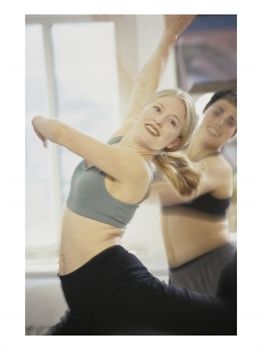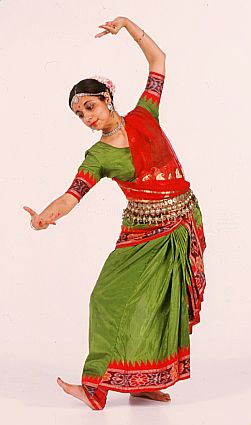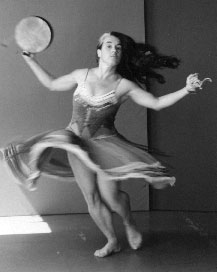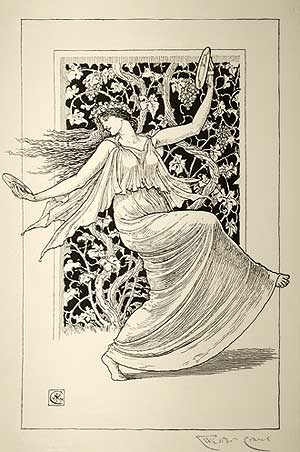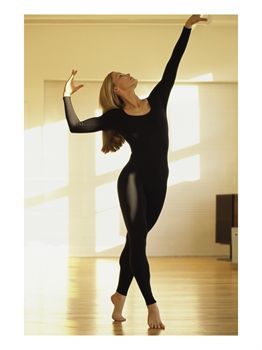 |
||||
|
Dancing for Self-Knowledge
Dancing for Self-KnowledgeBy Joyce Kutcher, Ed.D. - 1999. Women have not been taught to take care of themselves. They frequently spend their time taking care of everyone and everything else, leaving themselves for last. Women in modern day America lead truly busy lives, rushing around on a daily basis trying to make sure everything gets done--for significant others, for children, for bosses, and for work. Paying attention to everyone else's needs and wants at the expense of considering their own can have detrimental effects on women. After years of spending time "doing for others", women may manifest signs of depression or anxiety. They may be angry, bitter, resentful, edgy; they may feel apathetic and lack passion for life. The feminist movement has created many positive opportunities and choices for women, but the creation of the superwoman ideal keeps women in an impossible and unrealistic position. Women, in general, have not learned the importance of taking care of themselves. In the past 20 years, women in the mental health field have researched women's psychological development, providing answers as to why this is so (Gilligan, Rogers, & Tolman, 1991; Miller, 1986). It seems that while men's strength lies in separation and autonomy, women's strength lies in connection and relationships. Girls are brought up to focus on relationships, which become primary to both girls and women. When asked to describe themselves, women and girls interweave who they are with how they are in connection with other people in their lives. However that strength becomes a weakness when it is carried too far and women spend all their time consumed with others. It is important that women find a balance between caring for others and caring for themselves. Taking care of oneself can provide nurturance and sustenance to a drained, weary body and mind. When women take time to care for themselves, they are replenished with energy to move out into the world again. Taking time for oneself implies becoming familiar with who one is as an individual--by looking within and learning about oneself. When life is too busy, there is no time for such self-reflection, and yet it is the very thing needed to keep going. Dance provides opportunities to become familiar with oneself at a deep level, opening an avenue for revitalization and renewal. The use of dance as a healing ritual goes back to earliest human history (Chodorow, 1991, p. 1). Through dance one comes to a deeper understanding of the self through integration of the body, mind, and emotions (Kutcher, Stone, & Horan, 1997, p. 1). In this manuscript, the author introduces dance and its healing properties, while also focusing on how individual women can begin to use this creative art form for self-knowledge.
The Dance of Life When anyone says the word dance, people usually think of choreographed steps or a routine that is to be performed. But dance is also a form of creative expression. Self-expression takes place when an individual moves (dances) based on an impulse, feeling, image, or thought that spontaneously arises from within. There is no right or wrong way; the woman's dance is her dance. The way she moves today may be different from how she will move tomorrow. Her movement is based on her thoughts, feelings, and experiences at a particular moment. After dancing for a time she may come to see patterns in her dance which represent something specific in her life. At a recent workshop, a few women commented on how their restricted movements were symbolic of their fear to take risks in the rest of their lives. Through their dance experience, they were able to observe their fear revealed via their moving bodies. In other words, the dance provided concrete feedback. Sometimes this dance feedback can be more powerful than words. Dancing may bring forth material that has been stored in the unconscious. Such information has a strong hold over one's life, in spite of the individual not being aware that it is part of her. For example, a woman may get angry every time she tries to talk to her husband when he is reading the newspaper. She may think this is only about her relationship with her husband. When she looks deeper, however, she realizes she felt ignored by her father, especially when he read the newspaper and watched television. If she becomes aware of why she feels ignored and then talks with her husband about it, she may no longer feel ignored by him when he reads the newspaper. As a result, the woman now has control over her actions, whereas before she could only react. Becoming consciously aware gives an individual more choices of how to respond. In a dance workshop, a woman explored some new information she had obtained through her dance experience. She said, "My needs were to take care of her. But I have a hard time asking for myself. This was apparent by the way I allowed myself to move with others. The first step for me was the realization that I have inner needs to be taken care of. I would like to continue learning what else I have been depriving myself of." (Kutcher, Stone, & Horan, 1997, p. 7).
Dance invites opportunities to connect mind with body. Women's bodies, in western society, are a major source of discontent. Women are always talking about their bodies and doing things like dieting and exercising their bodies rather than connecting with them. Disconnection from the body keeps women at a distance from their feelings. Via dance, emotions arise. Feelings inform women about who they are and what is important. When women allow their feelings to surface and then pay attention to the feelings, the information they get may be used to make better decisions, decisions based on their own particularities and not the outer world. Joining with one's body brings a deeper respect for the body and a more profound sense of self. Before dancing, a woman may find a feeling arises or she may be stressed about a situation in her life. Dancing can then be used for release and to help move through her feelings or life situation. In one instance, a participant commented that in spite of her current difficult life circumstances, she was able to let go of the painful feelings and feel at peace with herself while moving her body. In dance, the participant is gently guided into the here and now, the present moment. During this woman's dance, she was able to liberate herself from a difficult life situation and focus on being solely with herself. In this way she was able to experience that there is more to one's life than just the immediate situation. Sometimes when a woman is overwhelmed by a difficult situation, she may forget there is more to who she is than just what is going on in the moment. The time spent dancing is also a time to reflect and to focus inward, which ultimately lends itself to learning more about oneself. Dancing, like other expressive art forms, provides opportunities for developing one's curiosity, sense of adventure, and playfulness. After dancing, a workshop participant remarked that she felt the dancing was much like being a child again. Indeed this is so. Adults lose this sense of adventure and playfulness that children call on spontaneously. How come? Often times there is a belief that adulthood is supposed to be filled with seriousness; adults may lose sight of the spontaneity and flexibility of childhood as they get bogged down in all the tasks of adulthood. Dancing can help a person find her way back to playfulness. Natalie Rogers (1993, p. 3) described the healing process when using dance or any of the other expressive art forms. "The [individual's] self-knowledge expands as her movement provides clues for further exploration. Using [dance] becomes a healing process as well as a new language that speaks to the [individual]. [Dancing] is a potent [medium] in which to discover, experience, and accept unknown aspects of [the] self. [It] moves the [individual] into the world of emotions and add[s] a further dimension." Dancing is an extremely powerful tool to assist in reconnecting to oneself. It offers nourishment to the exhausted and depleted body, mind, and soul.
Moving from the Inside Out Women are so accustomed to doing and being according to external standards that learning to move according to one's own inner experience can be difficult. In preparation, find a comfortable place to sit or lie down and close your eyes. You will want to begin by taking deep, relaxing breaths, inhaling in and out slowly. Pay careful attention to your breathing, while making sure you are letting go. When I say letting go, I mean feeling your body letting go of the tension it usually carries. You are relaxed when all of your body feels limp. Then--based on an impulse, feeling, or image--begin to move. You may have an impulse to move your right arm or you may feel a deep sense of sadness in your heart and put your hands over your heart. Your image may be of being sexy or turning into a wild woman. Rogers (1993) talks about how transformation begins to take place during movement. If, for example, you start with a feeling, the steps to transformation may look like this :
|
|
|||
|
|
||||
|
[You] feel ____________. [Your] body moves __________. A new feeling emerges ______________. [Your] body moves the new feeling which is _____________. Another feeling arrives which is ___________. [Your] body moves accordingly _________. Another feeling comes, which is _____________. [Your] body accepts this new feeling _____________. Eventually, [your] body stretches and [your] eyes open. [You may find you are] keenly aware of all senses. By starting with the awareness of a feeling and allowing that feeling to create a dance, the feeling shifts, transforms, and [provides new information]. The original cause of the [feeling] does not disappear. [After such an experience, the body relaxes and the mind has new information that will help the person take action]. (Rogers, 1993, p. 55).
You may use the previous statements to watch the process of transformation occur in you. When beginning this work, it may be easier to keep your eyes closed so you stay focused on your inner experience. Moving from the inside helps facilitate self-discovery (Rogers, 1993). Secure a safe place for your dancing. This environment needs to provide enough space so you can move freely; it must feel comfortable and secure to you. This space could be in your home, a friend's home, or outdoors.
When you move, you will also want to consider whether or not to use music. You may decide to use music based on a certain mood, or you could decide to dance without music. Let this choice be determined by your feeling state at that particular moment. It is important to decide if you would like another person to move with you or whether you want to move by yourself. At the beginning of your dance experiences, it could be extremely beneficial to ask another person to be a witness. You might ask a dance therapist another member taking part in a workshop or therapy group. Such an individual could observe you as you move and then provide feedback. This person is not charged with interpretation of your dance, but asked to be with you during your dance experience. For example, in a recent workshop, the witness for a woman crawling across the floor on her elbows expressed pain and despair, and sensed persistence despite adversity. When this information was shared with the dancer, she felt extremely affirmed. Even though it was someone else's experience, these words tied into her own experience. When conveying an experience to a mover, the witness speaks from her own experience. The witness will want to start with "I felt . . . . " The mover always speaks first and then the witness shares her experience. If you are going to move on your own and do not have a witness, you may consider witnessing yourself in a journal. As you witness your own movement over time, you will probably see some themes and experience personal growth from your new insights. However, always remember that keeping a journal is for you. There is no need to worry about grammar or punctuation. If you find you are blocked, write about feeling blocked. When someone is stuck in therapy, the therapist may ask about the feeling of being stuck. In this very same way, you can write about your stuck feelings in your journal. After a movement experience, it is a good idea to write whatever comes to your mind without censoring what you write. In psychotherapy, this is known as free association.
You may use other expressive art forms to facilitate your cognitive understanding of the dance experience. You might keep a journal of art and/or poetry. An art journal may be created using paints, crayons, markers, oil pastels, chalks, and/or collage materials. You may choose to sculpt with clay. The choice is yours, your preference. You may use all the modalities or you may feel particularly aligned with one. There is no right or wrong way; just choose what is most comfortable for you. If you would like to dance and feel uncomfortable beginning on your own, it is important to listen to your intuition and find someone who can help facilitate this process for you. Dance therapists may work with you individually or in a group setting, much like talk therapists. You may find a dance therapist in your neighborhood by getting in touch with the American Dance Therapy Association. There may also be dance classes at your local university. Some of the instructors will likely be teaching dance classes geared for healing purposes. Lastly, you may find a psychotherapist who is trained to use expressive arts in therapy. You will want to question the therapist about his/her training. CONCLUSION Women have not been taught to take care of themselves. They frequently spend their time taking care of everyone and everything else, leaving themselves for last. Via dance, women can begin to learn who they really are. As women take the time to go inside, a sense of balance is restored in their lives. When women feel restored, they are able to give to others in a way that is full of energy, caring, and love.
REFERENCES Chodorow, J. (1991). Dance therapy & depth psychology. New York: Routledge. Gilligan, C., Rogers, A., & Tolman, D. (Eds.) (1991). Women, girls, & psychotherapy. New York: The Haworth Press, Inc. Kutcher, J., Stone, P., & Horan, S. (1997). Healing through creative movement: Contact improvisation. Unpublished manuscript. Miller, J. B. (1986). Toward a new psychology of women. Boston: Beacon Press. Rogers, N. (1993). The creative connection: Expressive arts as healing. California: Science & Behavior Books, Inc.
|
||||
 |
|
 |
||

